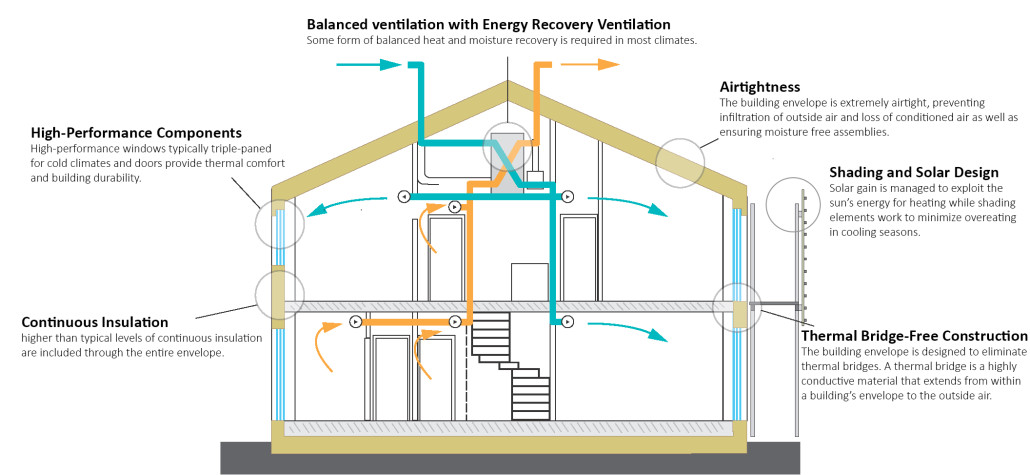The Passive House design movement has been the most effective design approach to reducing building energy use for over 25 years around the globe. Although Passive House design began in residential buildings, it is now widely used in many other building types including offices, hotels, libraries, museums, and schools. The passive building strategies developed by the Passive House Institute include a quantifiable performance standard that can be implemented in most building types. Buildings that meet this high performance building standard use dramatically (up to 80%) less energy and provide better indoor air quality and thermal comfort than those designed to conventional codes. This design approach also provides greater resiliency and survivability during extreme weather events.
Passive building strategies lower the amount of operating energy in a cost effective manner by applying conservation measures first. In this way it is practical to supply all of a building’s energy needs with relatively low levels of renewable sources. As a result, passive building strategies are the ideal foundation for net zero energy buildings.
A Passive House design relies on a few foundational principles to achieve extreme energy efficiency, comfort, and resiliency.
Passive building strategies are low-tech, with few moving parts, so buildings are durable and have minimal maintenance needs. Passive House design carefully models and balances a comprehensive set of factors—including heat emissions from appliances and occupants—to keep the building at comfortable and consistent indoor temperatures throughout the heating and cooling seasons, using as little active energy input as possible.
Passive building strategies do not radically differ from conventional building, but require special balancing and care through both the design and construction stages. The passive building designer uses software and design methods to adjust multiple variables—insulation R-values, wall construction parameters, etc.—until the design model meets the energy performance targets. Construction crews must learn and apply approaches to air sealing and thermal bridges. As a result, to assure performance, a project will undergo stringent third-party quality assurance and quality control inspections, including final testing and commissioning of the mechanical systems.
Passive building strategies do not dictate an aesthetic—they have been successfully applied in traditional as well as contemporary and minimalist designs.
Larger buildings are economical candidates for passive building for a variety of technical reasons, including economy of scale and a more favorable volume-to-surface-area ratio. Passive House multifamily projects have cost approximately 0% – 3% more than conventional multifamily buildings. A recently completed passive apartment building in Brooklyn, referred to in the “One City, Built to last” report that the New York City Mayor’s Office published in 2014, did not have a cost premium compared to a conventional building.

